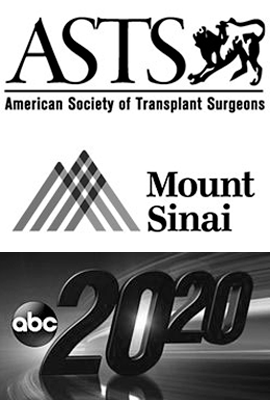Endovascular Repair AAA
When an aneurysm is large (5 centimeters or more), is growing rapidly or is leaking, endovascular aortic repair (EVAR) is a minimally invasive procedure performed to repair abdominal aortic aneurysms (AAA) as well as thoracic aortic aneurysms with a lower risk of complications when compared to traditional open surgery. Because EVAR requires very small incisions, patients recover quickly. In addition, for those who are elderly or have existing aortic health concerns and conditions, endovascular repair of the aorta is a safer way to restore the aorta and prevent the risk of rupture.
While EVAR may seem like a suitable treatment option for every patient, any aortic aneurysm repair requires extensive knowledge and insight into the behavior of aneurysms. Doctors must consider the size, exact location, the complete health history of the patient and all risks associated with the procedure. In essence, if the risk of having surgery is smaller than the risk of rupture without having the procedure, doctors are more likely to suggest a surgical repair.
The following are potential risks for endovascular repair in which every patient should be aware of:
- Bleeding (around the area of the graft)
- Blockage of the stent
- The stent slips
- Nerve damage (resulting in weakness, pain or numbness in the legs)
- Kidney failure
- Poor blood supply to organs (including kidneys)
- Difficulty getting or keeping an erection
Having extensive experience with EVAR and other minimally invasive aneurysm treatments, Dr. Alan I Benvenisty, MD is a highly respected general and vascular surgeon in New York City. Dr. Benvenisty devotes ample time and attention to patients, which is why many seek his expertise when it comes to conservative aneurysm repair and other vascular conditions. Dr. Benvenisty has been instrumental in the management and treatment of aortic aneurysms. To schedule an appointment, contact Dr. Benvenisty’s office on Amsterdam Avenue today.
Endovascular Repair AAA Procedure
Endovascular repair is performed in an operating room, radiology department or catheterization lab of a hospital. Typically, an incision is placed in one or both groin arteries. An expandable stent graft resembling a metal coil covered in fabric is inserted through the incision and into the femoral artery. X-rays are used to guide the stent graft into the aorta until it reaches the aneurysm. Next, the stent is opened and attaches to the walls of the aorta. The frame of the stent pushes against the healthy walls of the aorta, and the graft is stabilized. The aneurysm shrinks around the stent as blood flows through the stent graft instead of the aneurysm.
While the above-mentioned EVAR is considered a standard repair, there are complex repairs for aneurysms that affect additional arteries branching off of the aorta. In these cases, a different type of graft is necessary to fit and align with the particular anatomy of the arteries. When determining the type of endovascular repair that is appropriate for patients, vascular specialists must consider the location of the aneurysm, how quickly it is growing, the overall health of the patient and the complexity involved in the repair.
Dr. Alan Benvenisty, MD holds considerable experience in EVAR, including the management and treatment of aortic aneurysms. He is also fully equipped to manage complex aneurysms that are not amendable to other treatments. Thus, patients benefit from tailored, personalized treatment for their aortic conditions. Dr. Benvenisty is currently accepting new patients at his office on Amsterdam Avenue in New York City. Contact our office today to schedule your appointment.







